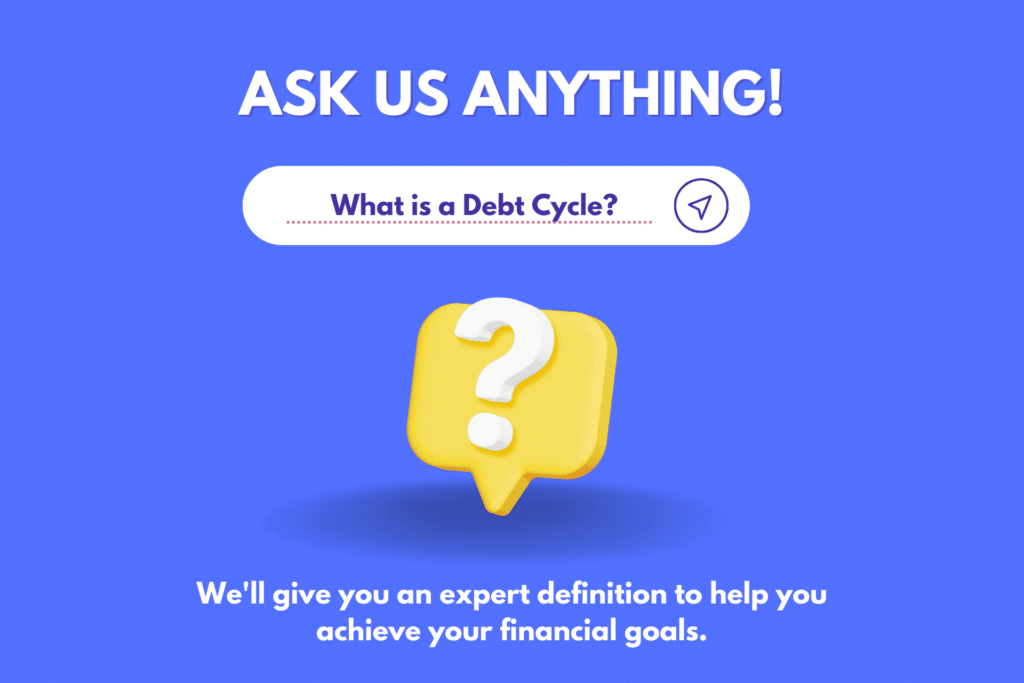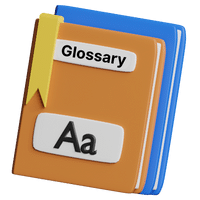Definition Explained with Real-life Examples and Strategies for Success
What is a Debt Cycle? Here’s What You Should Know
Have you ever heard the term ‘Debt Cycle’ and wondered what it’s all about? Well, you’re in luck because today, we’ll dive into this important financial concept.
Understanding the debt cycle definition can help you make smarter decisions when borrowing money and managing your finances. It’s not as complicated as it might sound, and once you get the hang of it, you’ll be well on your way to taking control of your finances.
So, buckle up, and let’s explore this game-changing term together!
Here’s What You Will Find:
Debt Cycle Definition
The debt cycle, also known as the “Debt Trap,” refers to a situation where an individual or a business continuously borrows money to pay off existing debts, making it difficult to break free from the cycle of debt. It typically happens when someone takes out new loans or uses credit to cover their ongoing expenses, including the interest and principal payments on previous loans.
As a result, their total debt keeps increasing, and they become trapped in a seemingly never-ending cycle of borrowing and repayment.
There are a few key factors that contribute to the debt cycle:
High-interest rates
When you borrow money, you’re usually charged an interest rate. If the rates are high, the cost of borrowing increases, making it harder to pay off the debt and causing it to grow faster.
Minimum payments
When you make only the minimum payments on credit card balances or other loans, you may feel like you’re making progress but barely covering the interest charges. This prolongs the repayment period and increases the overall cost of the debt.
Overspending
You’ll likely need to rely on credit or loans to cover the gap if you consistently spend more than you earn. Over time, this can increase debt levels and contribute to the cycle.
Emergency expenses
Unexpected expenses, like medical bills or car repairs, can throw your financial plan off course. If you don’t have an emergency fund, you may need to rely on borrowing to cover these costs, further adding to the cycle.
Lack of financial planning
Without a clear plan in place to manage your finances, it’s easy to lose track of your spending and debt levels. Poor budgeting and a lack of financial goals can contribute to the debt cycle, as you may not know how much you’re borrowing and its long-term impact on your financial health.
How to Break Free from a Debt Cycle
Breaking free from the debt cycle involves a combination of strategies, such as:
Creating a budget
A detailed budget can help you track your income and expenses, identify areas where you can cut back, and allocate funds to pay off your debts more aggressively.
Prioritizing high-interest debt
Focus on paying off debts with the highest interest rates first, as these cost you the most over time. By reducing these balances, you can save on interest and free up more money to tackle other debts.
Building an emergency fund
Having a dedicated emergency fund can help you cover unexpected expenses without relying on credit or loans. Aim to save at least three to six months’ worth of living expenses in a separate, easily accessible account.
Seeking professional help
If you’re struggling to manage your debts, consider speaking with a credit counselor or financial planner who can help you create a personalized debt repayment plan and provide guidance on improving your financial situation.
Changing spending habits
Identify and address the root causes of your overspending. This may involve cutting back on discretionary expenses, increasing your income, or developing healthier financial habits.
By understanding the debt cycle and taking proactive steps to break free from it, you can regain control of your finances and work towards a more secure financial future.
Remember, it’s important to be patient and persistent, as it may take time to see significant progress in reducing your debt levels. But with dedication and a solid plan in place, you’ll be well on your way to achieving financial freedom and avoiding the pitfalls of the debt cycle.
So, take that first step, and start your journey toward a debt-free life today!

Real-Life Example:
Let’s consider the following real-life example to illustrate the debt cycle:
Meet Jane, a 30-year-old professional who earns a decent salary but struggles to manage her finances. Over the years, Jane has accumulated several credit card balances and personal and car loans.
When Jane first started using credit cards, she enjoyed the convenience and rewards but didn’t keep track of her spending. She began making only the minimum payments on her credit card balances, which led to high-interest charges and mounting debt.
Jane found it increasingly difficult to cover her monthly expenses as her debt grew. She took out a personal loan to make ends meet, intending to consolidate her credit card debts. However, she continued to rely on her credit cards for everyday expenses and emergencies, causing her debt to grow even more.
Jane’s car unexpectedly broke down, and she had to finance a new one with a car loan, adding to her existing debt. At this point, she was stuck in a debt cycle—borrowing money to cover her monthly expenses, including the interest and principal payments on her previous loans.
Jane decided to take control of her finances to break free from the debt cycle. She created a budget, prioritized her high-interest debt, and built an emergency fund. She also sought professional help from a financial planner to develop a personalized debt repayment plan.
By making these changes and sticking to her plan, Jane eventually broke the debt cycle and regained control of her financial future.
Final Thoughts
Understanding the debt cycle definition is crucial for making informed decisions about borrowing and managing your finances. Breaking free from this cycle requires dedication, planning, and a commitment to changing your financial habits.
By being proactive and borrowing responsibly, you can avoid the pitfalls of the debt cycle and work towards a brighter, more secure financial future. Remember, the key is to borrow only what you need and have a solid plan to repay it.
With the right approach, you can achieve financial freedom and enjoy the benefits of responsible borrowing. So, take charge of your finances today, and pave the way for a debt-free tomorrow!

